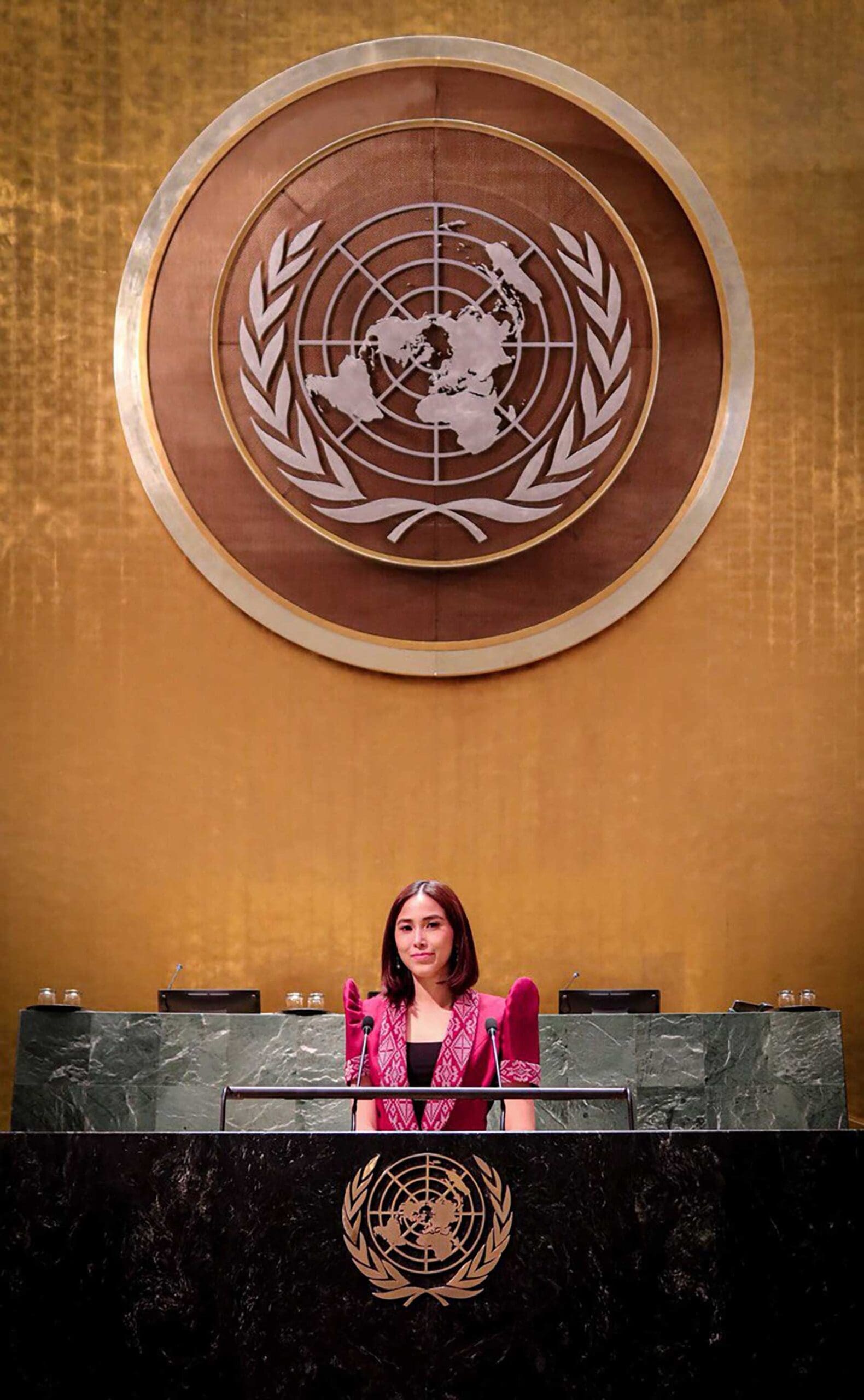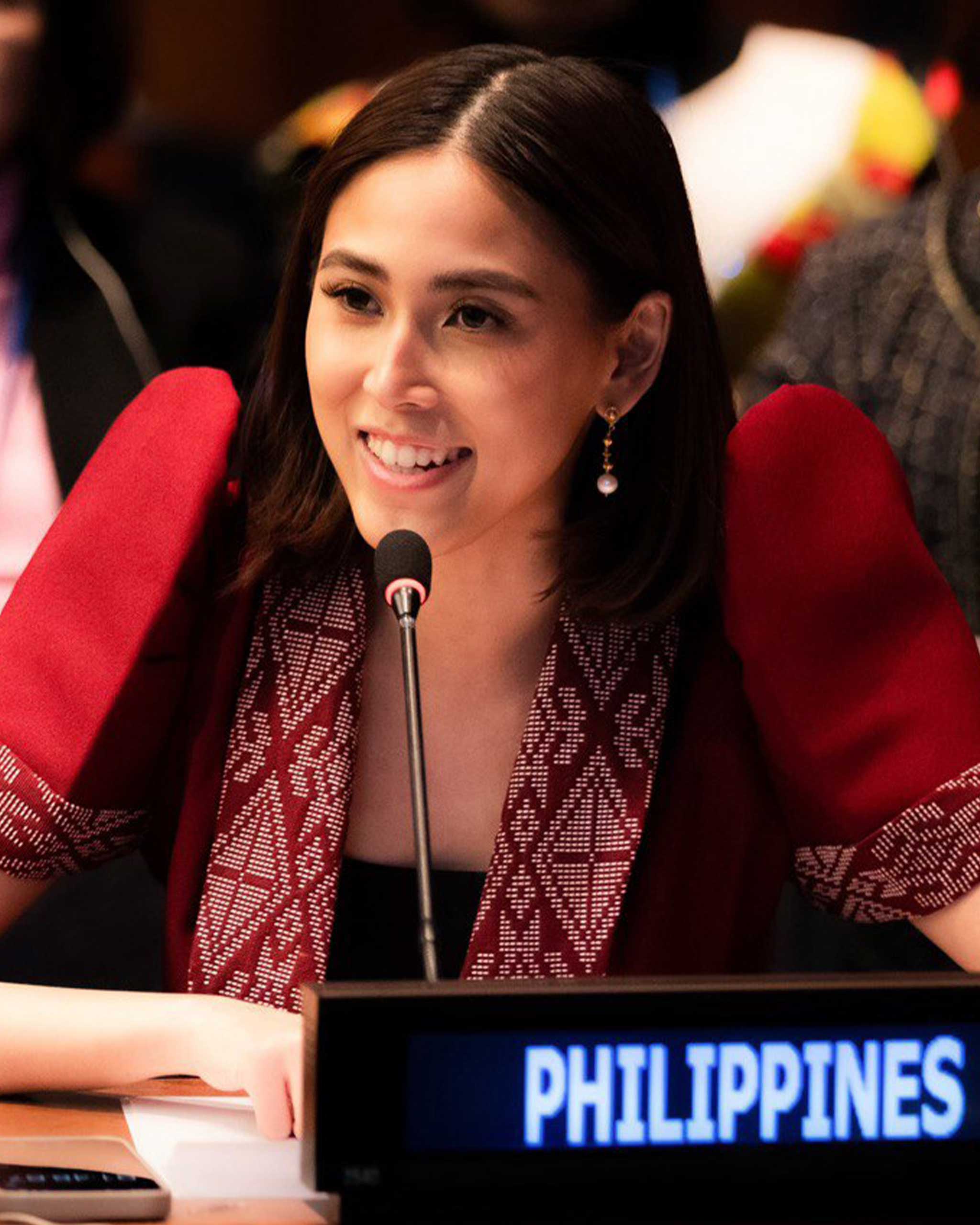Mandy Romero delivers a speech at the United Nations’ 68th Commission on the Status of Women assembly. Photo by Emad Karim. Courtesy of UN Women
At the United Nations’ 68th Session of the Commission on the Status of Women, the Philippines’ youth representative Mandy Romero pushed for women and girls’ education.
In three minutes, you could have a cup of instant noodles, perhaps listen to the latest pop song, or spend it watching Tiktok videos. For others, three minutes could be for meditation or a quick workout. But for Mandy Romero, the three minutes she was given at the United Nations’ 68th Session of the Commission on the Status of Women could shape international policies.
Her three-minute speech at the assembly was a culmination of everything that Romero has learned and experienced throughout her advocacy work over the years. At nine years old, she began working with Tulong Sa Kapwa Kapatid (2KK), where she would spend her weekends teaching students in Payatas. Mandy recalls “begging her way in” at her school’s social action office, which she was refused because she was “too young.” “But every day I go there, and I’m like, ‘Please, I want to do something!’” she tells Vogue Philippines. Soon enough, one of her teachers led her to 2KK, which thus began Romero’s path.
By the age of 14, she became the head of the education program and helped create learning modules and curriculum. “From a young age, I really saw the value of education, how it can change lives,” she says. Through the years, she watched the students come into their own paths as college graduates and youth community leaders. Romero is also involved with Save Our School Network, a “network of child-focused NGOs, church-based groups, and other stakeholders advocating for children’s rights to education.”
When Mandy was nominated by the National Youth Commission to be a representative for the Philippine delegation, she understood its impact. At the end of the conference, she explains, all the countries create agreed conclusions, which are subsequently integrated and tailored into the programs and laws of each signing nation. “I knew I had a big responsibility because I had a platform to shape national policy,” Romero says.
With such a role, Romero amplified the voices of Filipino women. “It’s not about my voice; it’s about the voices of all the women and girls I’ve worked with, who I’ve learned from, and who are not in the room with me, who may never be in the same rooms as well. We need to highlight them, center their voices, and bring them to the forefront,” she says.

Line by line
In only three minutes, how do you encapsulate the complex problems of Filipino girls and women? “Every line and every word were carefully chosen to reflect meaning,” Mandy says. She feels confident in her preparation of the speech, so much so that she challenges anyone to ask her about any part of it. “You could ask me any line, and I’ll tell you the source,” she says.
In her speech, Mandy highlighted education as a key step to achieving zero poverty. One out of 10 girls is out of basic education, she points out, a statistic that shows the Philippines’ gender parity in education. Although it is better than other countries, Romero feels that the Philippines needs to address the remaining one-tenth of girls who are unable to receive an education. “Everybody is just looking at the 90 percent that are there already. But they’re forgetting that the last 10 percent have very different challenges from the first 90,” she says.
“Their identities, their experiences are invisibilized by policy and our current programs,” she continues. “But the theory of intersectionality by Kimberlé Crenshaw states that we have a multitude of experiences and identities that, once put all together, lead to a unique set of challenges, paradynamics, and forms of oppression.”
She goes on to mention the various challenges that these women and girls face: intersecting poverty, food poverty, food insecurity, nutrition insecurity, and time poverty, to name a few. Time poverty, in particular, is a pressing challenge for women and girls, who are often left with family and household responsibilities. “On top of all that, where will they find time to study? Where will they find the time to do something for themselves, for their own economic independence?”Romero says.
Indigenous communities grapple with a different set of challenges as well. Aside from facing socio-economic struggles, indigenous students also face violence and harassment. “These indigenous communities’ right to peaceful education must be protected by systems of access and equity,” Romero says in her speech. She also brought to light the challenges faced by “Last Mile” school students. “Last Mile” schools are defined as schools in geographically isolated, disadvantaged, or conflict areas. According to Romero, these schools have less than four classrooms, which are often unelectrified. She shares that each classroom is multi-grade, with one teacher for multiple grade levels. The facilities are also not upgraded due to the small number of students.
“Sometimes people can have access to education, but access without quality is not access,” she says. “If you will address inequities in education, you must address inequities in the student’s life.”
She stresses that women and girls finishing their education is key to being economically empowered. “The data shows that young women who have a college education are the most likely to participate in the labor force,” she shares, adding that because of the Universal Access to Quality Tertiary Education Act, nine percent more students were able to enroll, 2.4 million of which are women. “It shows that women seize the opportunity. But we must invest in them,” she says.
Romero still has so much to say beyond the three minutes she was given. But for three minutes, the voices of the girls and women she encountered were heard, a step to the progress they dream of. At the end of it all, her message is loud and clear: “Invest in girls, and watch it change the world.”
- UN Women Launches Country Priorities Toward Women’s Empowerment For 2024
- Karen Davila Has Been Appointed As The First UN Women Philippines Goodwill Ambassador In New York
- Raising Hope: Cultural Preservation and Community Empowerment for Indigenous Peoples
- Over Pastries And Tea, Vogue Philippines Celebrates International Women’s Day With Inspiring Stories
